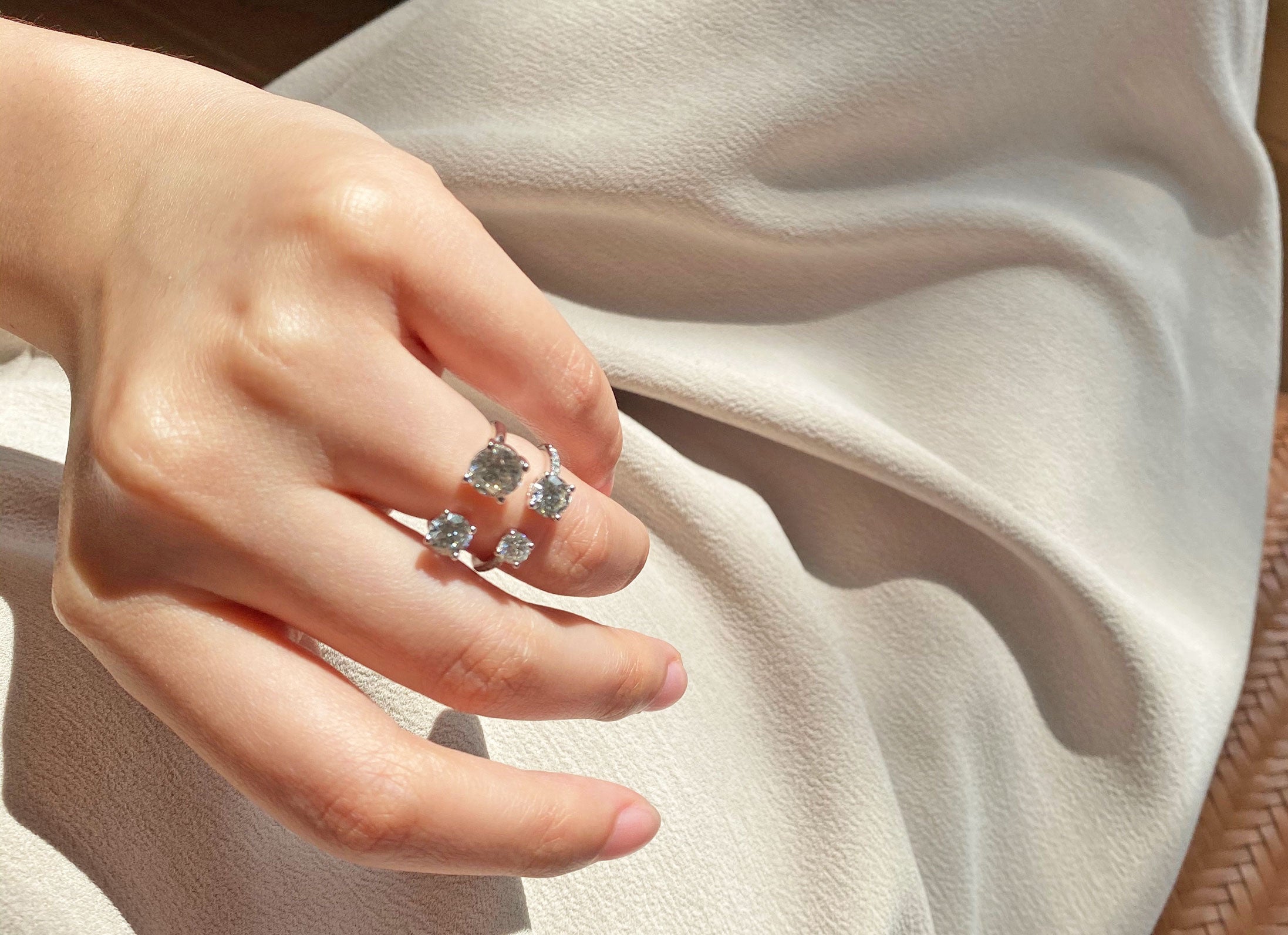The jewel business has developed fundamentally with the ascent of igi vs gia, which are turning into a well known option in contrast to mined diamonds. Lab-created diamonds are artificially, actually, and optically indistinguishable from normal diamonds yet accompany less ecological and ethical worries. Like their normal partners, lab-grown diamonds are reviewed for quality by gemological foundations. Two of the most unmistakable organizations offering jewel reviewing administrations are the Worldwide Gemological Establishment (IGI) and the Gemological Foundation of America (GIA).
This article investigates the critical contrasts between IGI and GIA as far as how they grade lab-created diamonds, assisting you with understanding what’s in store while picking between them.
Foundation of IGI and GIA
Prior to understanding the distinctions in how they grade diamonds, perceiving the standing and foundation of these two institutions is fundamental.
IGI (Global Gemological Organization) was established in 1975 and has grown to become one of the biggest precious stone reviewing laboratories around the world. IGI is notable for evaluating both regular and lab-grown diamonds. It has laid out serious areas of strength for an in the lab-grown jewel industry and is frequently liked by retailers for its openness and reasonableness.
GIA (Gemological Organization of America) was laid out in 1931 and is viewed as the worldwide expert in gemology. GIA is credited with fostering the generally perceived 4Cs (Cut, Variety, Clearness, and Carat) reviewing framework used to assess diamonds. While GIA is basically eminent for evaluating normal diamonds, it has likewise entered the lab-grown jewel market, albeit not as overwhelmingly as IGI.
Evaluating Standards for Lab-Created Diamonds
While both IGI and GIA grade diamonds in view of similar essential standards (the 4Cs), their way to deal with reviewing lab-created diamonds contrasts in more than one way.
Evaluating Phrasing and Consistency
One of the main distinctions between IGI and GIA lies in the phrasing they use and their evaluating consistency for lab-created diamonds.
IGI involves similar reviewing standards and wording for lab-grown diamonds as it accomplishes for regular diamonds. For instance, IGI will grade a lab-created precious stone utilizing the standard variety scale from D (vapid) to Z (light yellow or brown). The lucidity of lab-grown diamonds is likewise reviewed on a scale from Faultless (FL) to Included (I), similarly as regular diamonds are. This consistency makes it simple for customers to understand the nature of a lab-created jewel contrasted with a characteristic one.
GIA, then again, adopts a more safe strategy. Historically, GIA involved different phrasing for lab-grown diamonds, labeling them as “synthetic” or “laboratory-grown.” However, as of late, GIA has refreshed its language and presently labels lab-created diamonds as “laboratory-grown,” eliminating the obsolete “synthetic” wording. GIA has likewise started offering reports for lab-grown diamonds that are more detailed, bringing them in accordance with its normal precious stone evaluating reports. Indeed, even with these changes, GIA will in general be more mindful in its evaluating, which might prompt somewhat stricter appraisals contrasted with IGI.
Report Organization and Detail
One more key distinction between IGI and GIA is the configuration and detail gave in their reports.
IGI lab-created jewel reports will quite often be direct, detailed, and easy to understand. IGI remembers detailed data for the jewel’s cut, variety, lucidity, and carat weight, as well as any laser engravings or medicines the precious stone might have gone through. Many purchasers value IGI’s complete detailing, which plainly imparts all fundamental parts of a jewel’s quality.
GIA’s reports for lab-created diamonds were again essential contrasted with their regular precious stone reports, giving restricted detail. However, GIA has expanded its lab-grown precious stone reports lately, giving more data like its reports for regular diamonds. All things considered, GIA stays zeroed in on distinctive lab-grown diamonds from normal ones, frequently including more data about the precious stone’s origins and any medicines utilized in the creation cycle. Accordingly, GIA’s reports might feel more careful concerning provenance and logical details, however they can likewise be somewhat more specialized.
Availability and Prevalence in the Market
IGI is as of now the more prevailing player in the lab-created jewel market. Many retailers offering lab-grown diamonds pick IGI confirmation in view of its more extensive availability and faster times required to circle back. As the demand for lab-created diamonds develops, IGI’s scope has expanded, making its reports all the more generally found in adornments stores and on the web.
GIA, albeit exceptionally regarded in the regular precious stone industry, isn’t as broadly utilized for lab-grown diamonds. While GIA has started offering more detailed reports for lab-created diamonds, many retailers actually favor IGI for its openness and valuing. However, GIA is many times picked by those looking for a superior, broadly confided in certificate, particularly for better quality or bigger lab-grown diamonds.
Evaluating of Certificate
The expense of accreditation is another factor that recognizes IGI from GIA with regards to lab-grown diamonds.
IGI is by and large more reasonable than GIA, especially for lab-created diamonds. Its lower certificate expenses settle on it a well known decision among retailers who need to offer competitive valuing on lab-grown diamonds without settling on the nature of certificate. This reasonableness has likewise added to IGI’s strength in the lab-grown precious stone market.
GIA, because of its standing and thorough reviewing process, frequently charges higher expenses for jewel certificate. This applies to both normal and lab-grown diamonds. Thus, GIA-guaranteed lab-grown diamonds might accompany a marginally more exorbitant cost tag, mirroring the apparent distinction of the GIA report.
Buyer Trust and Discernment
Both IGI and GIA are exceptionally regarded foundations in the jewel business, yet they contrast as far as buyer trust and discernment, especially for lab created diamonds.
IGI is frequently considered to be more reasonable and open, especially for lab-grown diamonds. While certain purchasers could see IGI reports as less prestigious than Gia’s, the lucidity and extensiveness of IGI’s reports make it a confided in choice for many customers. IGI-guaranteed lab-grown diamonds are usually viewed as offering phenomenal worth, offsetting moderateness with solid reviewing.
GIA, then again, is much of the time viewed as the gold standard, particularly for high-esteem diamonds. Shoppers who focus on brand notoriety and thorough evaluating might incline in the direction of GIA certificate, especially in the event that they are buying a better quality lab-grown precious stone. GIA’s standing for severe evaluating standards can likewise give purchasers extra trust in the nature of their precious stone.
Conclusion
Picking either IGI and GIA for a lab-created jewel at last relies upon your needs. IGI is more reasonable, broadly available, and gives easy to understand reports, pursuing it a useful decision for many purchasers. Then again, GIA offers a more prestigious certificate with stricter evaluating, interesting to the individuals who focus on brand notoriety and thorough quality standards.






More Stories
Edelweiß & Gletscherwasser: Die Geheimzutaten der Schweizer Hautpflege
Wartungsbest Practices für eine längere Lebensdauer von Photovoltaik-Modulen
Sperrmüll Abholung in München: Einfach und stressfrei mit IP Entrümpelung Bayern